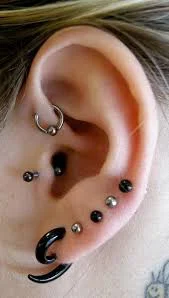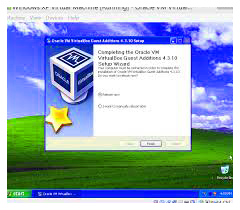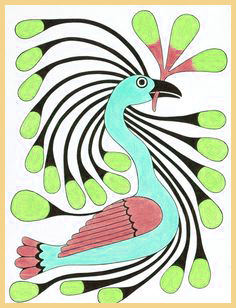The Real Problems With The Media's Beauty
At long last, it would appear that noteworthy change is occurring in the corporate media. Never again are just ultra-thin ladies meeting its beforehand extremely inflexible magnificence standard - or what it's truly been - an agreeableness standard for ladies.
 |
| The Real Problems With The Media's Beauty |
Ladies with real fat on their body (pant!) are presently progressively spoken to in standard TV and even polished magazines. Not exclusively are they showing up, they are being displayed as cases of awesome magnificence.
Games Illustrated highlighted on its cover the stunning model Ashley Graham in 2016, which made worldwide news since she is by conventional media gauges around 70 pounds overweight.
Graham is currently going to be a judge on the board for the show "America's Next Top Model" with Tyra Banks.
The prevalent HBO demonstrate "Young ladies" stood out as truly newsworthy in the course of recent years since it uncovered real cellulite on one of the superstars. Marvelousness magazine took action accordingly by showing on its cover the four stars, one of them intensely fat, her cellulite deliberately uncovered.
Digital TV, YouTube, and different types of elective media appropriation set the point of reference 10 years and all the more prior. They have enabled us to see genuine bodies spoke to on video all the time.
Presently, the corporate media itself is evolving. Performing artists on TV ads, female climate forecasters, even pop stars... It's going on. Ladies who are bigger than scarecrow thin are never again restricted from portrayal as being typical, and even excellent, individuals.
What a triumph - or so it appears. All things considered, for quite a long time, women's activists, concerned guardians, and "hefty size" activists have been protesting the media's introductions of ultra-thin ladies as the measure of female magnificence, and the required body compose to try and meet all requirements to be a star.
They contended that this standard puts relatively every lady alive, even lean ladies, in the "excessively fat" class, and that it leads numerous young ladies and ladies to create and anorexia, bulimia, and the sort of counting calories that at last prompts gorging.
Companies like Dove have tuned in. The prevailing press are changing in accordance with these requests. The fundamental precepts of open dialog on "self-perception" and the portrayal of ladies have moved. It's encouraging, without a doubt.
Be that as it may, something's missing here. Something about as large as an elephant in a room.
It's something that has an inseparable tie to why such huge numbers of ladies and young ladies have "self-perception" issues in any case, and why such a significant number of create eating dysfunctions.
That something isn't just around an unyielding or unreasonable or even physically undesirable magnificence standard.
It's likewise about how ladies' excellence is dealt with. It's about how ladies' bodies, however different in size and shading and age, are portrayed.
To place it in women's activist wording: the issue is sexual typification.
The Sports Illustrated cover highlighting the wonderful Ashley Graham may have sent the message to ladies who are bigger than scarecrow thin that they, as well, can be sexually alluring at the weight they are.
In any case, is this a message about aware want? Or then again something different?
Do the photographs of the three included ladies of various body composes inspire from the male watcher: a regard for ladies' limits, an affirmation of their restraint and their mind boggling humankind, and the understanding that a lady's sexuality is imparted just to those a lady imparts it to?
Or then again does it send the message to the male watcher that the mind boggling humankind of ladies who turn them on isn't in reality genuine, or doesn't make a difference? Does it send the message that ladies don't have important sexual limits? Furthermore, that ladies aren't particular in whom they share their sexuality with in light of the fact that - simply look - these three differing models who have what numerous consider to be the best employment on the planet for ladies - demonstrating - are on the whole offering it to the camera and to a large number of unknown male watchers, no criteria required?
Young ladies and ladies don't grow low confidence, self-perception edifices, and eating dysfunctions basically in light of the fact that their body write isn't spoken to in the media.
That is a piece of the issue. However, it's not the most essential part. Truth be told, the tight control over an external marvel standard is in reality only an aspect of the genuine, more profound issue - and that more profound issue is the ill bred depiction of ladies. The depiction of ladies - and even young ladies - as sexual items.
Only one out of every odd lady will concur that sexual typification of ladies is a type of lack of respect. A few ladies feel that grasping that part is an approach to guarantee their womanliness, and that the sexual consideration they get from that isn't ill bred.
I would contend that what they are getting a charge out of is the easing of open lack of respect and negligence.
For men who have figured out how to externalize ladies, the prelude to "getting a few" looks similar to deferential conduct - grins, gestures, consideration, perhaps some polite romance.
Be that as it may, if the men giving the consideration don't see a complex, characteristically aloof person when they see a lady exhibited as a sexual question, there's no realness in their show of regard.
On the off chance that you read accounts from ladies and young ladies about how their dietary problems began, most allude to sexual mishandle in the family, sexually generalizing remarks tied in with the ultra-thin magnificence standard, and being excessively affected by that ultra-thin excellence standard in the media - after their confidence is low.
What's more, low confidence originates from being dealt with as though undetectable. It originates from being dealt with as though one's internal parts, one's limitlessness mind boggling mankind, isn't genuine or critical.
It originates from being spoken to in the pervasive media as though one doesn't have the physical and sexual limits that individuals who matter have. The sort of limits that should be regarded. It originates from being dealt with as though one is a protest for another person to utilize - regardless of whether the "question" is assigned as "excellent."
In light of the way of life's typification, above all in the media, ladies and young ladies figure out how to externalize themselves.
A young lady's regular impression of herself which she innately has as a youthful youngster shifts from being the critical subject of her life - the person who encounters her body, who encounters the world - to being a question for the survey joy of others.
Despite everything she has the necessities of a subject, of a genuine, unendingly complex individual, yet her self-discernment is molded by the treatment she gets, and by the social portrayal of individuals who resemble her.
She begins to consider herself as far as pictures. The pictures that the media speaks to. The pictures that she knows others (who are additionally prepared by the media) see when they take a gander at her.
You could state that a "poor self-perception" issue comes about.
In any case, an individual doesn't normally think about her own body basically as far as a "picture." Her origination of her body is normally - before self-protest - multi-tactile.
This regular self-origination incorporates her visual comprehension of her own body all things considered, however - before the self-typification is disguised - her internal experience of her body isn't separate from her visual picture of it.
In the event that we aren't typifying ourselves, we normally relate our visual impression of ourselves with our inner experience of ourselves.
When we have this regular impression of ourselves, we don't characterize ourselves as indicated by a "self-perception." We don't think about our body essentially from an outside perspective, as though we were another person taking a gander at our body.
It isn't so much that a placid individual couldn't care less about her appearance. The inverse is valid. When we feel placid, we think about our appearance since we are pleased, strongly, of our identity.
Some in the "body inspiration" development have said that ladies' appearance is stressed excessively in the media, and that ladies' characteristics other than physical appearance ought to be esteemed.
I think what they are naturally questioning is the media's externalization of ladies' appearance.
Appearance does make a difference - in light of the fact that we matter. Our appearance is a piece of our wholeness.
It's the disguised partition of body from self hood - self-externalization - that necessities retouching.
It's the sexual typification of ladies and young ladies in the public eye that requirements evolving.
When we are placid, we cherish our body while never reflecting on whether we adore our body.
We adore being alive, we cherish acting naturally, we adore being in an astonishing human female body, stunning on the grounds that it is alive, and it gives us life.
We are all by nature aloof - before our association with our body is disjointed by the vicious and the subliminal request all through society and all through the media that the female body does not mean human self hood. Rather the female body is thought about and displayed as though it is freely open, until the point that it has been secretly asserted by somebody other than the human self in that female body.
The normal self esteem we are altogether conceived with is harmed or annihilated in this procedure.
The fight against the unyielding ultra-thin excellence standard appears to have been won, or possibly triumph is in locate. In any case, the issue behind that magnificence standard, why it was so damaging, and why it existed in any case, is sexual externalization and lack of respect toward ladies. Everything starts with generalization.
It's a great opportunity to name that "undetectable" glaring issue at hand.
The issue that is presently distinguished as ladies' and young lady's "poor self-perception" will proceed until the point when we dispatch another development that adequately challenges the generalization of ladies and young ladies.






















